Sanbanggulsa Grotto - Jeju (산방굴사(제주))
16.6Km 49941 2022-11-14
218-12 , Sanbang-ro, Seogwipo-si, Jeju-do
+82-64-794-2940
It is said that the peak of Hallasan Mountain where Baekrokho Lake now exists was taken off and thrown away, which then became Sanbangsan Mountain. The myth describes how unlike other mountains on Jejudo Island, this mountain does not have a crater. The 5m-high rock cave at the cliff on the southwest side of the mountain was originally called Sanbanggul Cave, but it is called a temple now because it possesses a Buddhist statue.
This is where monk Hye-Il (964~1053) had lived during the Goryeo dynasty (918~1392)
Inside the cave, you can see Marado Island and the Dragon Head Coast. You can also see small ponds being made by the water drops that fall from the ceiling all through the year. The plant zone on a cliff of Sanbangsan Mountain is also designated as a natural monument. It is the only place on Jejudo Island where island boxwoods grow. On the Dragon Head Coast is the Hamel Memorial Monument.
Jeju Island Special Tourist Zone (제주도 관광특구)
16.6Km 21458 2024-03-15
Jeju-do
+82-64-740-6000
Located to the southwest of the Korean Peninsula, the island of Jeju is Korea's largest tourist destination. The entire island has been designated as a special tourist zone, and it's easy to see why: there is hardly any spot on the island that is not photogenic. Unlike mainland Korea, which has a temperate climate, Jeju boasts a climate that is closer to subtropical. Hallasan Mountain, lying at the center of the island, is surrounded by 368 parasitic cones, known as "Oreum." Eleven beaches have been designated as tourist beaches, but including those that are not officially designated, the island features nearly thirty beaches in total. Famous beaches include Iho Tewoo Beach, Samyang Beach, Hyeopjae Beach, Geumneung Beach, and Gwakji Beach. Jeju's renowned Olle Trails, a system of hiking paths, span a total length of 425 kilometers and would take about fifteen days to complete in their entirety.
Sanbangsan Mountain (Jeju) (산방산(제주))
16.7Km 69452 2024-03-12
Andeok-myeon, Seogwipo-si, Jeju-do
+82-64-794-2940
Sanbangsan Mountain, meaning "mountain with a cave," is home to Sanbanggulsa Temple, a small temple located at the foot of the mountain where a Buddha statue is enshrined. According to Jeju mythology, it is said that the grandmother deity, Seolmundae Halmang, tossed aside a rock from Hallasan's summit, forming this mountain. Standing at 395 meters above sea level on the southwestern coast of Jeju Island, Sanbangsan Mountain boasts vibrant fields of mustard flowers in spring, creating a picturesque view against the backdrop of the mountain.
Hallasan Mountain [National Geopark] (한라산 (제주도 국가지질공원))
16.8Km 435162 2022-11-30
2070-61, 1100-ro, Jeju-si, Jeju-do
+82-64-710-3945
Hallasan Mountain stands proudly at the center of Jeju Island and is perhaps the island’s most memorable landmark. Also called Yeongjusan Mountain, meaning "mountain high enough to pull the galaxy," Hallasan Mountain is widely known by scientists for its geological value. Designated as a national park in 1970, there are 368 parasitic cones called "oreum" (Jeju dialect meaning peak) around the main mountain.
Hallasan Mountain is famous for its vertical ecosystem of plants that results from the varying temperatures along the mountainside. Over 1,800 kinds of plants and 4,000 species of animals (3,300 species of insects) have been identified; to explore the mountain's treasures, simply follow one of the well-developed hiking trails.
Hallasan Mountain Trekking (한라산 트레킹)
16.8Km 111319 2020-06-25
2070-61, 1100-ro, Jeju-si, Jeju-do
+82-64-740-6000
Situated on the southern tip of the Korean Peninsula, Hallasan is 1,950 meters in x_height and is the highest mountain in South Korea. Formed from volcanic activity, the mountain is a dormant volcano made mostly of basalt. Home to the magnificent Baekrokdam (lake-filled crater), the mountainside is covered with alpine flora and lush trees.
The mountain is characterized by majestic cliffs, steep slopes, interesting rock formations, and, in particular, myriads of colorful azaleas. There are over 360 small mountains (uniquely-shaped volcanic mountains called “Oreum” in Jeju dialect) surrounding Halla Mountain that offer new delights to visitors with the coming of each new season. Along with Hallasan, the oreums were officially named the Hallasan Natural Protection Area (Natural Monument No.12) in 1966.
There are six hiking trails along Hallasan. Seongpanak Trail on the east and Gwaneumsa Trail in the north go all the way up to the summit (Baekrokdam). Those looking for a less rigorous hike are advised to take the shorter trails reaching midway up the mountain. All trails are relatively short (less than 10 kilometers) and can be hiked in less than a day. Visitors are advised, however, to start early in the morning if planning on hiking up to the summit and to check official operating hours, as some trails are only open during certain hours of the day. Keep reading for information on some of the most popular trails.
* Gwaneumsa Trail (North)—Summit Trail
Gwaneumsa Trail offers hikers the best view of Hallasan’s deep valleys and stunning terrain. Midway along the trail is Guringul (a lava cave) and Tamna Valley. Tamna Valley is especially beautiful during the fall when the leaves are changing and during the winter when the entire area lays under a dusting of snow.
* Seongpanak Trail (East)—Summit Trail
This relatively long, gently sloping trail is perfect for beginners. Lush broadleaf trees give shade from the beating sun and in spring the azaleas bloom and turn the mountainside into a dazzling array of color.
* Eorimok Trail (Northwest)
This short trail is another relatively easy trail for beginners. In spring, the nearby meadows are adorned with red royal azaleas. From the stone pathway to Mansedongsan visitors can catch a breathtaking panoramic view of the countryside and the island’s signature Oreums.
* Yeongsil Trail (Southwest)
As the shortest trail in Hallasan, this trail boasts Yeongsilgiam (a spectacular cliff with series of unusual rock formations). It is covered with azaleas and royal azaleas in spring and vibrant autumn foliage starting in October.
Sanbangsan Canola Field (산방산유채꽃밭)
17.0Km 0 2024-03-07
San18 Sagye-ri, Andeok-myeon, Seogwipo-si, Jeju-do
The Sanbangsan Canola Field is located next to the public parking lot in front of Sanbangsan Land, making it very easy to find. The vast fields create a beautiful landscape of yellow blossoms before the backdrop of Sanbangsan Mountain. The flowers are usually at peak bloom in March. In addition to Sanbangsan Mountain, other nearby attractions include Yongmeorihaean Coast, and Sagyehaean Coast.
Namgyeongmirak (남경미락)
17.0Km 55 2021-03-24
190-3, Sagyenam-ro, Seogwipo-si, Jeju-do
+82-64-794-0055
This is a restaurant where you can eat fresh Jeju Jayeonsan hoe (sliced raw wild fish). This restaurant's signature menu is raw sliced sawedged perch. This Seafood restaurant is located in Seogwipo-si, Jeju-do.
Sagyehaebyeon Beach (사계해변)
17.1Km 0 2024-02-22
2147-35 Sagye-ri, Andeok-myeon, Seogwipo-si, Jeju-do
Sagyehaebyeon Beach is located at the foot of Sanbangsan Mountain. Created by wind, waves, and the geological features of the sedimentary layers in Hwasun-ri, the large and small marine potholes look like craters on the moon. Due to the geographical characteristics, the scenery is more beautiful if seen at low tide.
Jinmi Myeongga (진미명가)
17.1Km 21944 2024-02-20
167 Sagyenam-ro, Andeok-myeon, Seogwipo-si, Jeju-do
Jinmi Myeongga, under the ownership of Chef Kang Chang-gun, a saw-edged perch maestro, offers an extensive menu of over 30 dishes derived from a single saw-edged perch. Established in 1983, it has become a favored dining spot for Korean presidents and global leaders. Guests ordering Jeju's natural saw-edged perch are treated to hoe (raw fish), ppyeo jiriguk (bone fish soup), and an assortment of side dishes, where the hoe is noted for its chewiness and the fish soup for its rich flavor. It's advisable to make a reservation before visiting.
CU - Jeju Shinhwa Villas Branch [Tax Refund Shop] (cu제주신화빌라스점)
17.3Km 0 2024-06-26
139, Sinhwayeoksa-ro 304beon-gil, Andeok-myeon, Seogwipo-si, Jeju-do
-
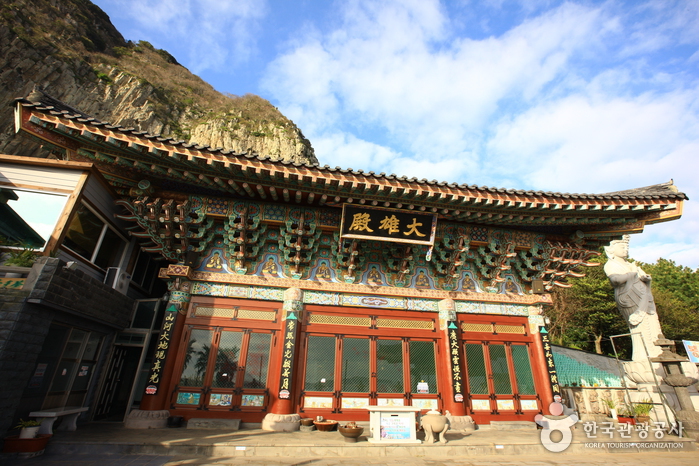

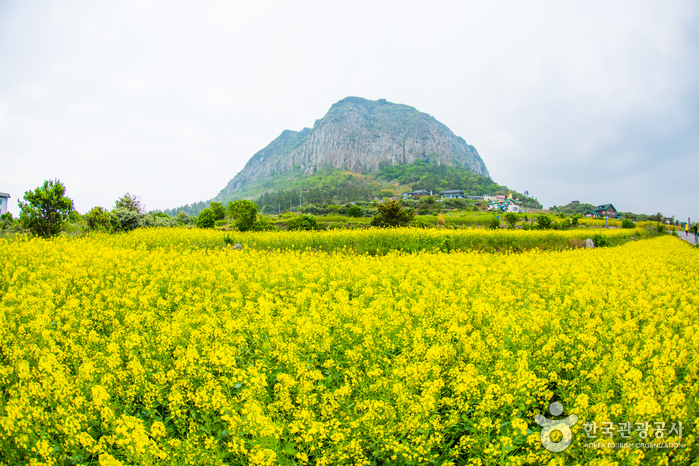
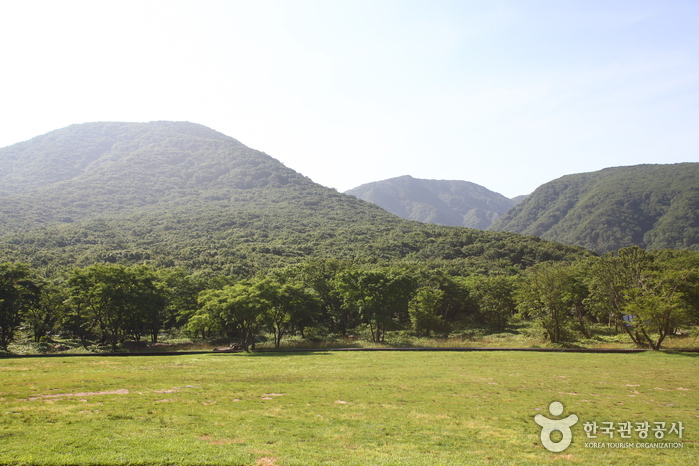
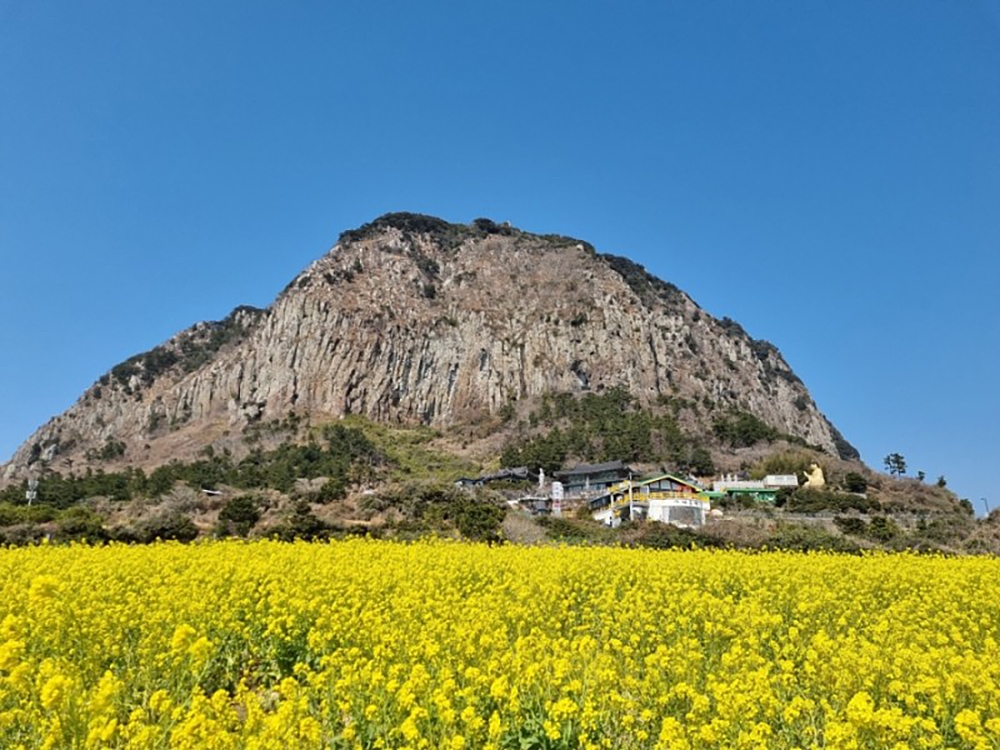
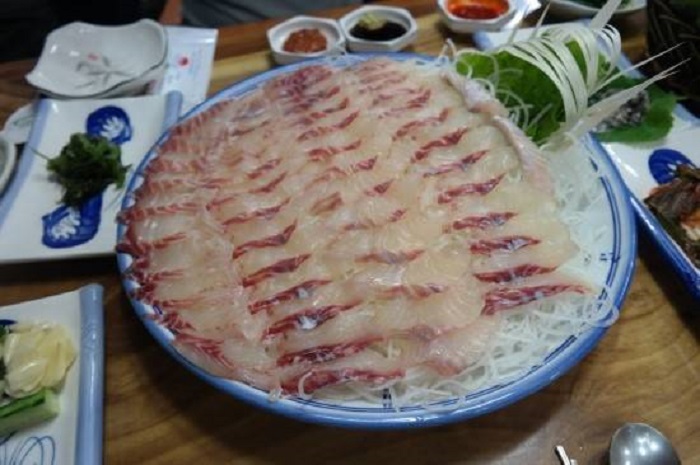
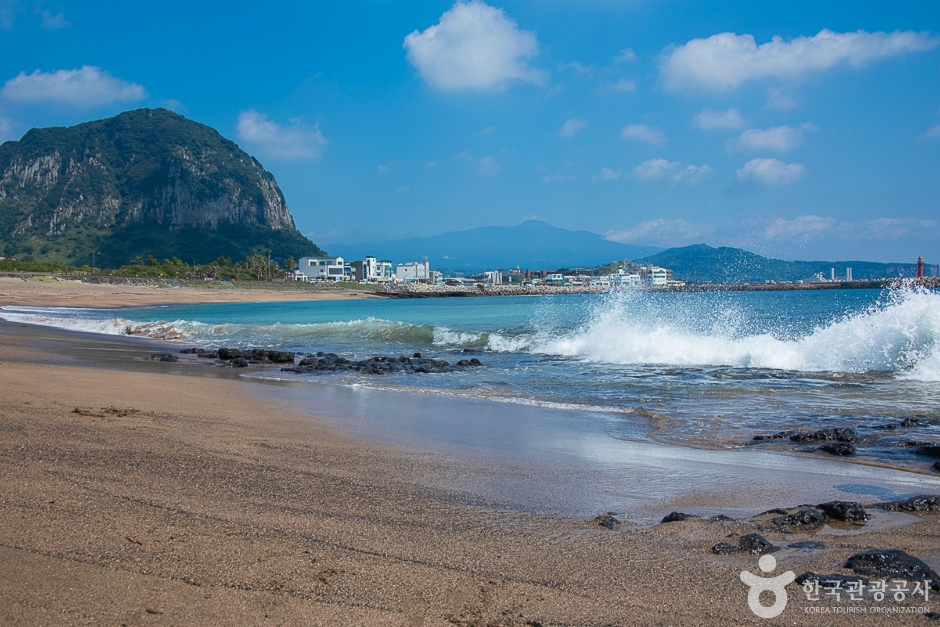
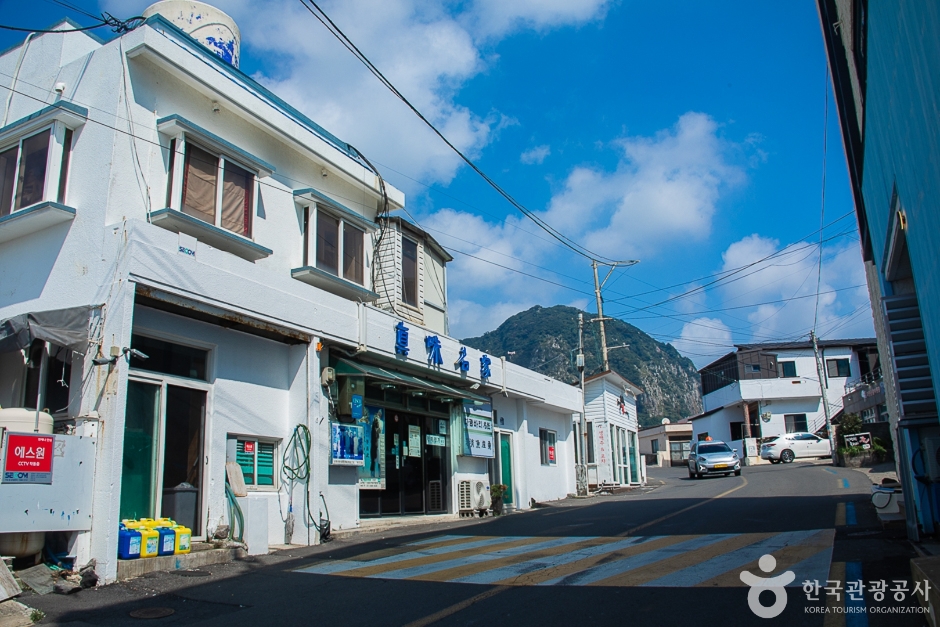
 English
English
 한국어
한국어 日本語
日本語 中文(简体)
中文(简体) Deutsch
Deutsch Français
Français Español
Español Русский
Русский